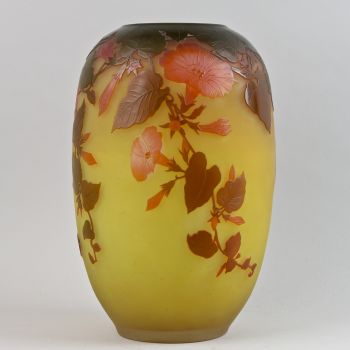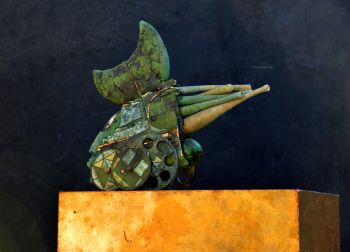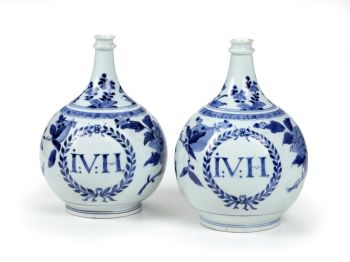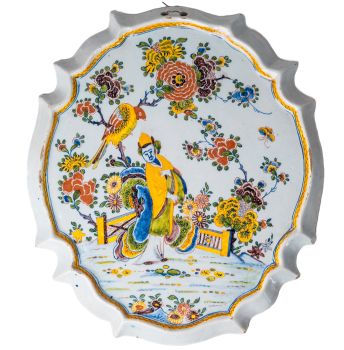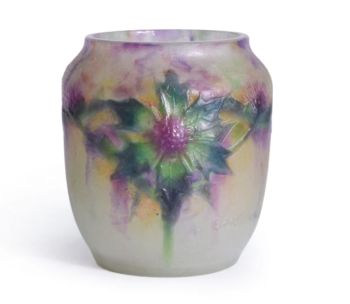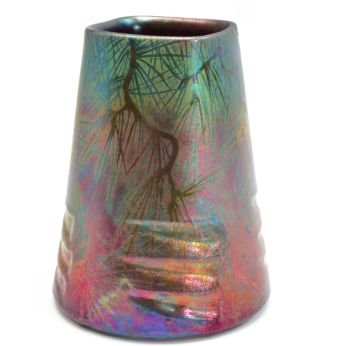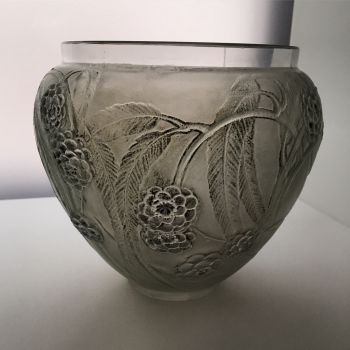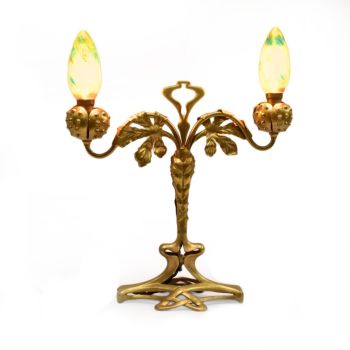Hyacinth 1920
Emile Gallé
Glass
31 ⨯ 13 ⨯ 10 cm
€ 9.950
Het Ware Huis
- About the artworkZeldzame grote blow-out vaas van Etablissements Gallé. De meester zelf was al geruime tijd overleden maar de ontwerpen die het bedrijf van Emile Gallé uitkwamen werden steeds verder geperfectioneerd en vernieuwd. Om aansluiting te houden bij de tijdsgeest ging men naast de techniek van het etsen nu ook perslucht gebruiken om vazen te produceren. Daarbij gebruikte men een mal waar in laagreliëf het decor was aangebracht. Na het blazen in de mal werd de vaas pas geëtst waardoor het decor extra hoog op de ondergrond kwam te liggen en waardoor er ook zachte kleurnuances konden ontstaan.
- About the artist
Emile Gallé was a French artist in glass, wood and ceramics. After several apprenticeships in various European cities, Weimar and Meisenthal amongst others, Emile Gallé became a partner at his father’s glass and faience decoration business in 1867.
Ten years later, he took over the family business and extended its activities to cabinet making in 1885. Previously acknowledged at the Clay and Glass Exposition in 1884, Emile Gallé was honored at the 1889 Paris World Fair with three rewards for his ceramics, glasswork, and furniture. Unfortunately, and to the great regret of Emile Gallé, ceramic work was no longer popular amongst the public, thus he oriented his focus to glasswork, a domain in which he developed and created new fabrication procedures. His research lead to the registration of two patents in 1898, one of which concerned the glass marquetry and the other on glass finish.
His work expresses throughout multiple references his diverse interests, in which nature plays a dominant, but not exlusive, role. His patriotic and political commitments were best expressed at the Paris World Fairs of 1889 and 1900 in such pieces as The Rhine Table (which calls for the return of Alsace-Lorraine to France) and the spectacular installation of The seven pitchers Marjolaine (for the rehabilitation of Dreyfus).Involved early on in the renewal of decorative arts, Emile Gallé distributed in his French, German and English warehouses quality mass-produced work thanks to the industrialization of production. In 1901, he was the founder and the first president of the Ecole de Nancy, the Alliance Provinciale des Industries d’Art.
Are you interested in buying this artwork?
Artwork details
Related artworks
- 1 - 4 / 10
Artiste Inconnu
François-Théodore Legras – Tall “Fleurs de Pommier” apple blossoms vase1900 - 1909
Prix sur demandeAntiques Emporium
Johann Loetz (Lötz) Witwe Klostermühle
Johann Loetz Witwe - Phänomen Genre 7773 – Orange1900 - 1910
Prix sur demandeAntiques Emporium
1 - 4 / 24Frères Daum
Daum Nancy – “Paysage Soleil Couchant” vase with two applied handles1900 - 1910
Prix sur demandeAntiques Emporium
1 - 4 / 24Johann Loetz (Lötz) Witwe Klostermühle
Johann Loetz Witwe – Jugendstil Cobalt Papillon vaas1900 - 1910
Prix sur demandeAntiques Emporium
Artiste Inconnu
Japanese art deco lacquervase with Scarab beetle motif1920 - 1950
Prix sur demandeDille Art
1 - 4 / 24Artiste Inconnu
Verre à boire Cristallo façon de Venise1600 - 1650
Prix sur demandePeter Korf de Gidts - Antiquairs
1 - 4 / 24- 1 - 4 / 12







